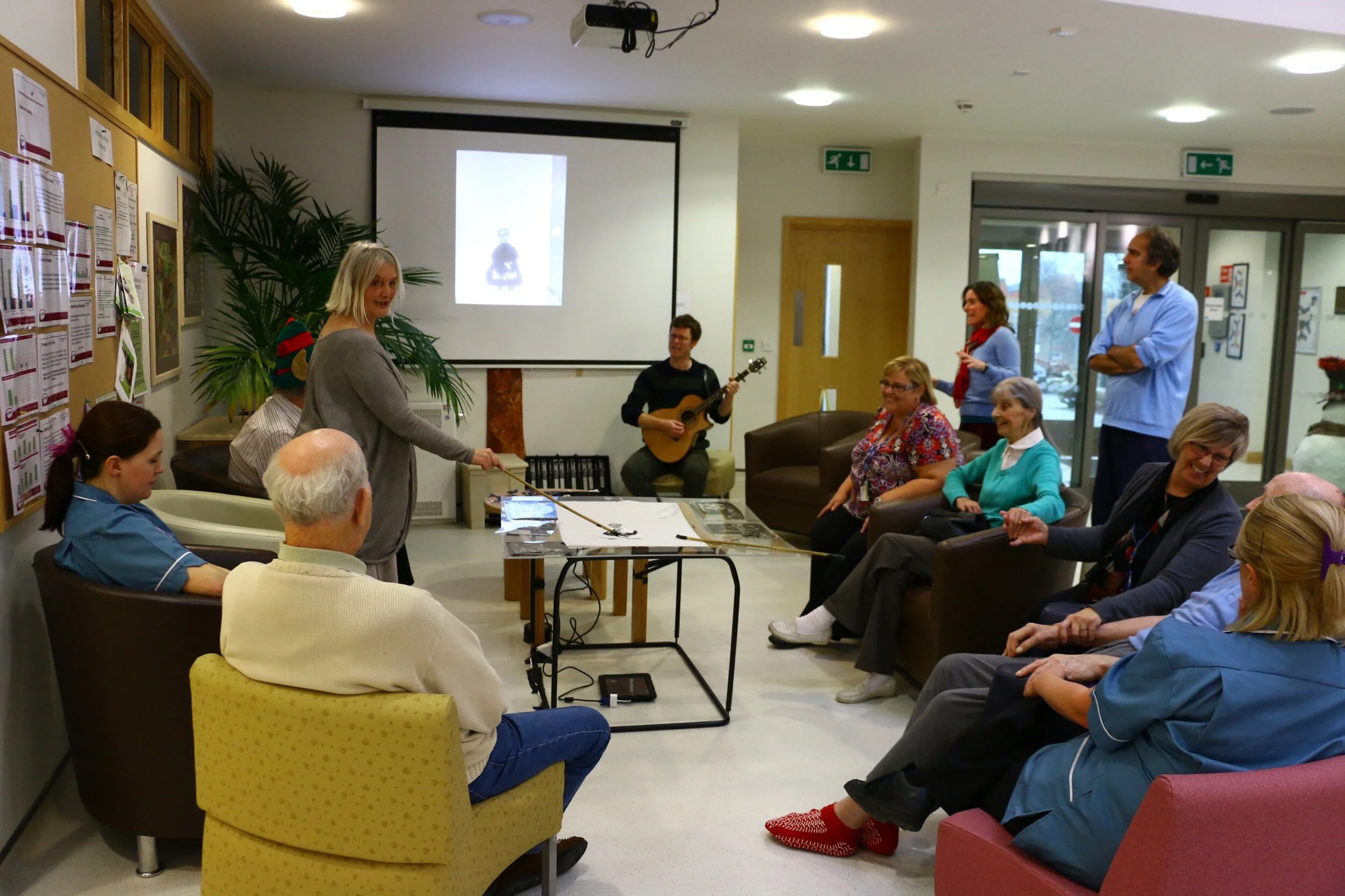The third and final principle of rapport based musical communication is to be inclusive. This means that the practitioner should consider each participant’s level of ability and capacity so that participants find the activities both inviting and satisfying to engage in. We know if we are being inclusive when we see participants responding to our offers naturally, of their own volition and the signs of rapport are present - social attention, synchrony and positivity. If the practitioner is not considering the identity of the participants in this way then the practitioner is not doing this practice.
For participants to feel like they want to engage, the practitioner must choose songs and activities that the person can relate too. For example, I have noticed how most people respond positively to Irish dance music. When I play a tune on my mandolin or whistle, most people in a room begin to tap their foot or move in some other way, sometimes looking at either myself or others and smiling. I don’t think that the participants consciously choose to tap their foot, they just like the offer of the pulse and tune and engage with it because it feels good. Being inclusive means to offer activities to a person that invites engagement of this nature.
I remember working in an mental health unit in Rotherham and sitting next to an elderly gentleman who had worked in the local colliery for his whole life. We had little life experience in common and there was no natural rapport. After considering what he might find meaningful, I was able to offer a folk song that told the story of a group of miners. The gentleman knew the song and, now that there was something that we shared a mutual understanding of, we could relate to each other and find rapport - giving each other more social attention while singing in synchrony and feeling very positive about the whole thing. It was a really wonderful moment that really showed me how the mutual understanding of something underpins rapport, and how people will engage positively of their own volition when the offer considers their needs.
Another similar story that highlights the importance of inclusivity happened when I was working in a care home in Barnsley with a lady who was to be 100 year old in a few days. My colleagues and I had been working in the home for 8 weeks and, every time we had offered this lady an activity or song she had simply said “why don’t you do it yourself?”, like she might have done if we had asked her whether she would like to do the hoovering or some other chore. She literally responded in the same unhappy way to every one of our suggestions. Finally, during our last visit to the care home, I had the idea to use an iPad painting app and I painted half the screen blue for the sky and and half green for the land. Rather than directly asking the lady whether she would like to take part in an activity I showed her the screen and said “This is the view from the window over there”. And the lady replied “That’s very pretty”. It was the first positive response I had received since meeting her. I drew some clouds and sun in the sky. “It’s a nice day” she said. “YES!” I thought. I went for the direct question now... “what else can you see in the picture? I asked. “A lovely tree” said she. So I added a brown trunk and green canopy and she smiled. I asked what sort of tree it is and she replied that it’s fruit tree. “What fruit grows in the tree?” I asked and she replied “red apples AND yellow bananas”. We had a chuckle at this idea and I chose a green circular brush on the painting app which meant that red circles appeared on the screen with a single tap. The lady was soon adding the apples to the tree and then the bananas when I offered her a yellow ‘brush’. It was another wonderful moment that has stayed with me since. Although I wasn’t using music explicitly, the principle of inclusivity is the same.
The principle of being inclusive relates to the third need posited by self determination theory - the need for competence. Competence is about feeling like you’ve done a good job at something, the need for a sense of achievement. Ryan and Deci (2004) explain that:
“Competence refers to feeling effective in one's ongoing interactions with the social environment and experiencing opportunities to exercise and express one's capacities. The need for competence leads people to seek challenges that are optimal for their capacities and to persistently attempt to maintain and enhance those skills and capacities through activity. Competence is not, then, an attained skill or capability, but rather is a felt sense of confidence and effectance in action”.
It follows then that, to facilitate fulfilment of a person’s need for competence, a practitioner can offer activity that is appropriate for the persons level of skills and capacity so that that activity is neither too easy nor too challenging, leading the person to be both interested in the activity and to feel a sense of achievement when engaging. To be inclusive is to apply this principle to all participants in a session.
Reference
Ryan RM and Deci EL (2002). Overview of self- determination theory: An organismic dialectical perspective. In E.L. Deci & R.M. Ryan (Eds.), Handbook of self- determination research (pp. 3–33). Rochester: The University of Rochester Press.
